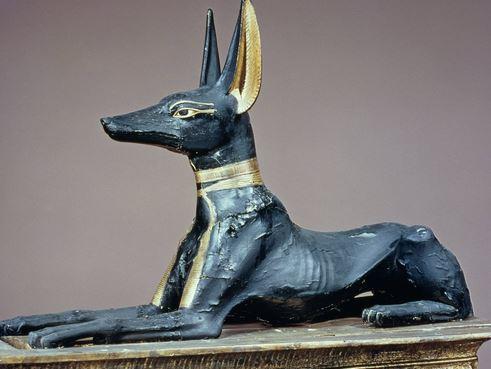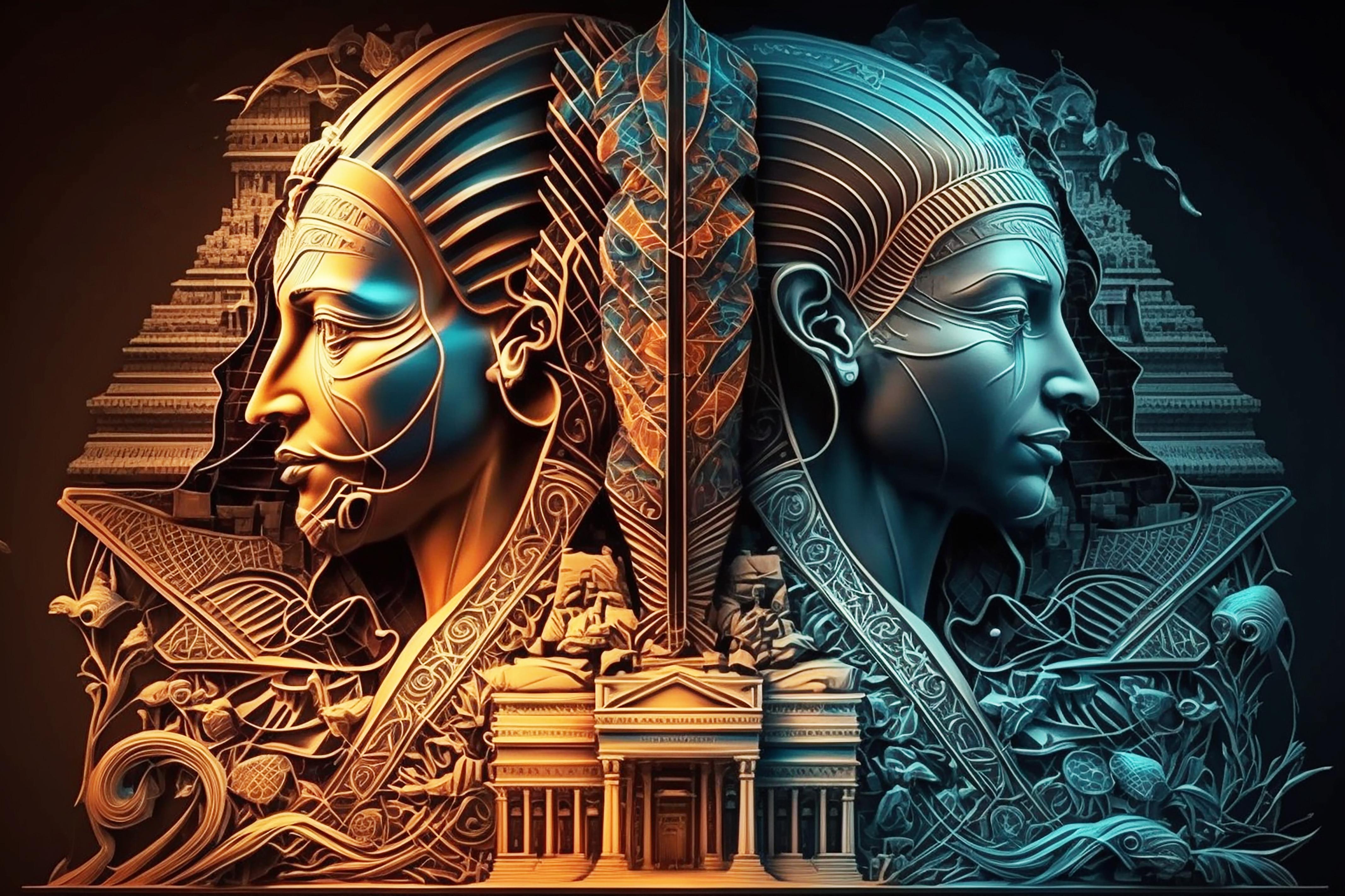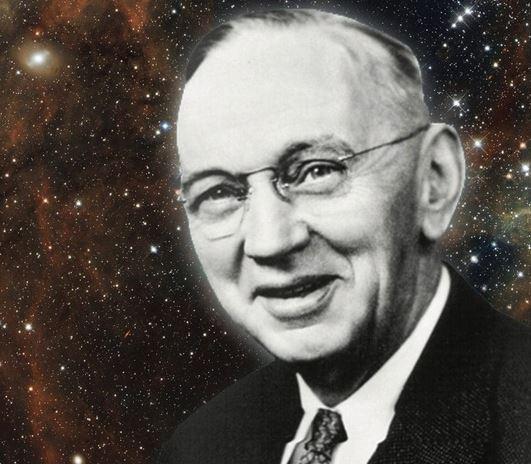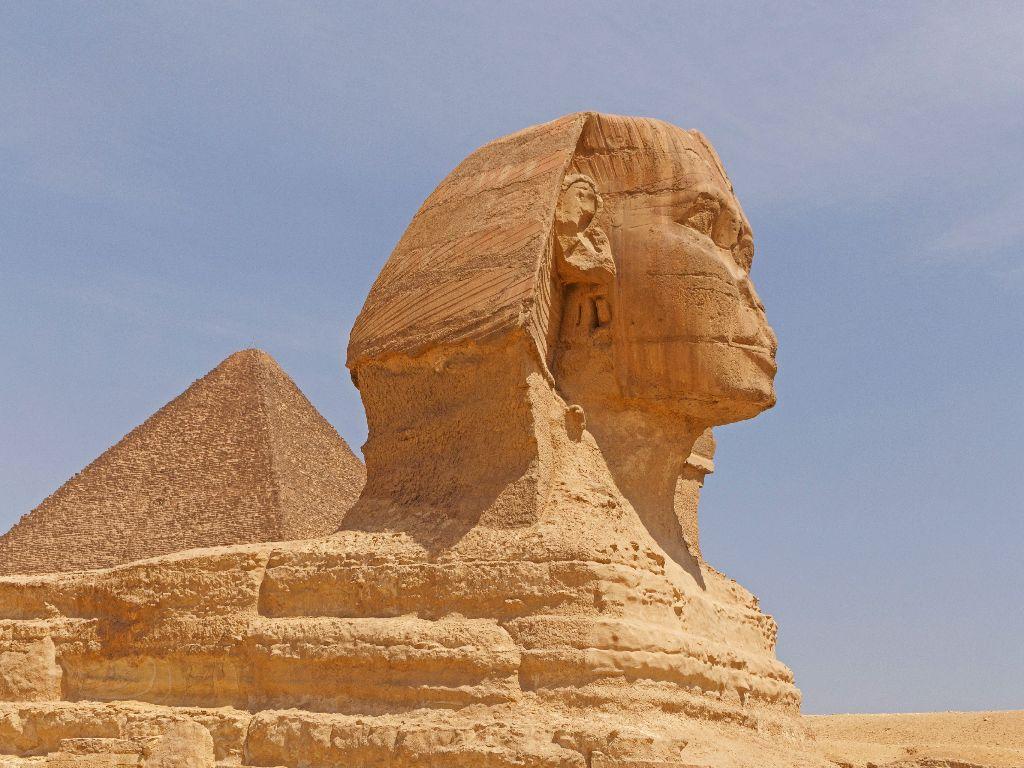Annubis: Unveiling the Ancient Egyptian God
In ancient Egyptian mythology, the jackal-headed god played a crucial role in the realm of the dead. Associated with mummification, protection, and the afterlife, this deity was revered for its power to safeguard the deceased on their journey to the afterlife.

The ancient Egyptian deity was often depicted as a man with the head of a jackal, symbolizing its role as a guardian and protector. This representation highlights the importance of the god in Egyptian funerary practices and beliefs about the afterlife.
Key Takeaways
- The jackal-headed god was associated with mummification and the afterlife.
- This deity played a crucial role in protecting the deceased.
- The representation of the god symbolized guardianship and protection.
- Anubis was a significant figure in ancient Egyptian mythology.
- The god's importance is reflected in Egyptian funerary practices.
The Origins of Anubis in Egyptian Mythology
In the pantheon of Egyptian gods, Anubis holds a unique position, with his origins and role evolving significantly over time. The mythology surrounding Anubis is a complex tapestry that reflects the religious and cultural practices of ancient Egypt.
Early Appearances in Ancient Texts
Anubis first appears in ancient Egyptian texts, notably in the Pyramid Texts, which are some of the oldest religious texts in the world. These texts provide valuable insights into the early worship and significance of Anubis.
Pyramid Texts and Early References
The Pyramid Texts, dating back to around 2400 BCE, contain spells and prayers that were meant to help the deceased pharaohs navigate the afterlife. Anubis is mentioned as a guardian and protector, highlighting his importance in funerary rites. "Anubis, the lord of the sacred land, makes his abode among the spirits."
Pre-Dynastic Worship Evidence
Evidence of pre-dynastic worship of Anubis suggests that his significance predates the unification of Egypt. Archaeological findings indicate that Anubis was revered in the earliest periods of Egyptian history, underscoring his deep-rooted importance in Egyptian religious practices.
Evolution of Anubis Through Egyptian Dynasties
As Egyptian dynasties rose and fell, the role and perception of Anubis evolved. His significance during different periods reflects the changing religious and cultural landscape of ancient Egypt.
Old Kingdom Significance
During the Old Kingdom, Anubis was primarily associated with the pharaohs and their journey into the afterlife. He was seen as a protector and guardian, ensuring the safe passage of the deceased rulers.
Changes During New Kingdom Period
The New Kingdom period saw a shift in Anubis's role, with his worship becoming more widespread among the general population. Anubis's association with mummification and the afterlife continued, but his mythology became more intertwined with that of other gods, such as Osiris.
Who Was Anubis? Understanding the Jackal-Headed Deity
As a god associated with mummification and the afterlife, Anubis's jackal-headed form held deep symbolic meaning for the ancient Egyptians. This distinctive representation was not merely aesthetic; it was rich in significance, reflecting both the protective and somewhat ominous aspects of Anubis's role.
https://www.youtube.com/watch?v=8bFHA1ot_g4
The Symbolism of the Jackal Form
The jackal form of Anubis was closely tied to the animal's behavior and characteristics in the ancient Egyptian environment.
Connection to Desert Scavengers
Jackals were often seen scavenging around cemeteries and desert areas, leading to their association with the dead and the afterlife. This connection likely influenced the depiction of Anubis as a guardian of the necropolis.
Protective Aspects of the Jackal Imagery
The jackal's fierce protective nature of its territory and kin was seen as a powerful symbol of guardianship, further solidifying Anubis's role as a protector of the dead.
Anubis's Family Relations in Egyptian Pantheon
Anubis's lineage and relationships with other deities were complex and played a significant role in his mythological significance.
Son of Nephthys and Osiris
According to myth, Anubis was the son of Nephthys and Osiris, born after Nephthys disguised herself as Isis to seduce Osiris. This complex family dynamic underscored Anubis's unique position within the Egyptian pantheon.
Relationships with Other Major Deities
Anubis was closely associated with other major deities, particularly Isis and Osiris, with whom he played a crucial role in the myth of Osiris's resurrection and the protection of the pharaohs.
Anubis's Role as Guardian of the Dead
Anubis, the jackal-headed god, was instrumental in safeguarding the dead and guiding them through the afterlife. As a crucial figure in ancient Egyptian funerary practices, Anubis's role was multifaceted, involving the protection of tombs and cemeteries, as well as guiding souls through the underworld.
Protector of Tombs and Cemeteries
Anubis was revered as the protector of tombs and cemeteries, ensuring that the resting places of the deceased were safeguarded against desecration.
Warding Off Tomb Raiders
His presence was believed to ward off tomb raiders and other malevolent entities that might disturb the peace of the dead. This protective role was crucial in maintaining the sanctity of burial sites.
Spiritual Protection of Burial Sites
Beyond physical protection, Anubis also provided spiritual protection, creating a sacred environment that allowed the deceased to rest in peace.
Guide Through the Underworld
Anubis's role extended beyond protection; he was also a guide for the deceased as they journeyed through the underworld.
The Journey to the Afterlife
He assisted souls in navigating the complex path to the afterlife, ensuring they reached their final destination safely.
Anubis as Psychopomp
As a psychopomp, Anubis led the deceased through the various stages of the afterlife journey, providing guidance and support when needed.
The Weighing of the Heart Ceremony
Anubis, the jackal-headed god, was instrumental in the Weighing of the Heart ceremony, a rite that determined the worthiness of the deceased. This ceremony was central to ancient Egyptian beliefs about the afterlife.

Anubis's Function in the Judgment of Souls
Anubis played a crucial role in the judgment process, ensuring that the heart of the deceased was weighed accurately against the Feather of Truth.
Preparation of the Deceased
The deceased was prepared for judgment through various rituals and spells, aimed at ensuring their heart was not heavy with sin.
The Role of Anubis as Witness
As the witness to the weighing, Anubis observed the heart's weight, determining whether it was lighter or heavier than the Feather of Truth.
The Scale of Ma'at and Anubis's Precision
The Scale of Ma'at was a symbol of truth and justice, and Anubis's role was to ensure its balance.
The Feather of Truth
The Feather of Truth, representing Ma'at, was used as the counterbalance to the heart, symbolizing the moral integrity required for a successful judgment.
Consequences of the Judgment
Those whose hearts were heavier than the Feather were devoured by Ammit, while those whose hearts were lighter were granted eternal life.
| Outcome | Fate |
|---|---|
| Heart heavier than the Feather | Devoured by Ammit |
| Heart lighter than the Feather | Granted eternal life |
Annubis in Ancient Egyptian Art and Iconography
The depiction of Anubis in ancient Egyptian art is a fascinating reflection of the god's significance in the culture. As a major deity associated with mummification and the afterlife, Anubis's representations offer insights into the beliefs and values of ancient Egyptians.
Common Depictions and Symbols
Anubis was commonly depicted as a jackal or a man with a jackal's head, often associated with symbols like the Was Scepter, which represented power and dominion over the underworld.
The Was Scepter and Other Emblems
The Was Scepter was one of the key emblems associated with Anubis, signifying his role as a powerful guardian. Other symbols included the Anch, representing life, and various funerary objects that underscored his connection to the dead.
Color Symbolism in Anubis Representations
Colors used in Anubis's depictions also carried significant meaning. Black, for instance, symbolized regeneration and the fertile soil of Egypt, while the use of gold highlighted his divine status.
Evolution of Artistic Representations
Over time, the artistic representations of Anubis evolved, reflecting changes in Egyptian culture and religious practices.
Early Dynastic Art vs. Late Period Depictions
In early dynastic art, Anubis was often depicted in a more rigid, formal manner, while later representations showed more flexibility and variation in style, indicating a shift in religious and artistic trends.
Regional Variations in Anubis Imagery
Regional variations in Anubis imagery also existed, with different areas of Egypt sometimes depicting him with unique attributes or in different contexts, reflecting local beliefs and traditions.
| Period | Common Depictions | Symbolism |
|---|---|---|
| Early Dynastic | Formal, rigid representations | Emphasis on power and authority |
| Late Period | More flexible and varied styles | Increased emphasis on protective role |
Worship of Anubis in Ancient Egypt
The worship of Anubis in ancient Egypt was a complex phenomenon that involved various rituals and sacred sites. As a god associated with mummification and the afterlife, Anubis played a crucial role in the funerary practices of the ancient Egyptians.
Temples and Sacred Sites
Anubis was worshiped in various temples and sacred sites throughout ancient Egypt. These sites were often dedicated to his role as a guardian of the dead.
The Cult Center at Cynopolis
Cynopolis, or the "city of dogs," was a significant cult center for Anubis. It was here that the god was revered in his jackal form.
Anubis Shrines in Necropolis Areas
Shrines dedicated to Anubis were also found in necropolis areas, where they served as places for the deceased to be honored and for rituals to be performed.
Rituals and Offerings
The worship of Anubis involved various rituals and offerings. These practices were designed to appease the god and ensure the safe passage of the deceased into the afterlife.
Funerary Offerings
Funerary offerings were made to Anubis as part of the mummification process. These offerings could include food, drink, and other goods.
Festival Celebrations
Festivals were also held in honor of Anubis, often involving ritual ceremonies and processions.
Priests of Anubis
The priests of Anubis played a crucial role in the worship of the god. They were responsible for performing rituals and ensuring the proper care of Anubis's cult.
Embalmer Priests and Their Duties
Embalmer priests were specifically responsible for the mummification process, a key aspect of Anubis's worship.
Ritual Masks and Ceremonial Attire
Priests wore ritual masks and ceremonial attire during the performance of rituals, further emphasizing the sacred nature of their duties.
| Aspect of Worship | Description |
|---|---|
| Temples and Sacred Sites | Dedicated to Anubis's role as guardian of the dead |
| Rituals and Offerings | Designed to appease Anubis and ensure safe passage |
| Priests of Anubis | Performed rituals and cared for Anubis's cult |
Anubis and Mummification Practices
In ancient Egyptian mythology, Anubis played a crucial role in mummification practices, ensuring the deceased were properly prepared for the afterlife. This connection to embalming and mummification solidified Anubis's importance in ancient Egyptian funerary rites.
The God's Connection to Embalming
Anubis was not only associated with mummification but was also considered the inventor of this complex process. His role as a divine embalmer was pivotal in ancient Egyptian beliefs about the afterlife.
Anubis as Inventor of Mummification
According to myth, Anubis was credited with inventing the art of mummification. This invention was seen as a crucial step in allowing humans to achieve immortality, as it preserved their physical bodies for the afterlife.
The Divine Embalmer's Techniques
The techniques used by divine embalmers, guided by Anubis, involved intricate processes to preserve the body. These included removing internal organs, treating the body with natron, and wrapping the deceased in linen bandages.
Funerary Rites Under Anubis's Protection
Various funerary rites were performed under the protection and guidance of Anubis. These rituals were essential for ensuring the deceased could successfully transition into the afterlife.
The Opening of the Mouth Ceremony
One significant ritual was the Opening of the Mouth ceremony, which allowed the deceased to eat and drink in the afterlife. This ceremony was crucial for restoring the deceased's senses and faculties.
Canopic Jars and Anubis's Guardianship
Canopic jars, used to store the removed internal organs, were also under Anubis's protection. These jars were believed to be guarded by the four sons of Horus, further emphasizing Anubis's role in safeguarding the deceased's integrity.
Anubis vs. Other Death Deities in Egyptian Mythology
Among the complex pantheon of Egyptian gods, Anubis stood out as a protector of the dead, yet his functions often intersected with those of other underworld deities. The mythology surrounding death and the afterlife in ancient Egypt was multifaceted, involving several gods and goddesses with distinct roles.

Relationship with Osiris
Anubis's relationship with Osiris, another pivotal deity in Egyptian mythology, is particularly noteworthy. While both gods were associated with the afterlife, they had distinct responsibilities.
Division of Underworld Responsibilities
Osiris was often considered the ruler of the underworld, while Anubis acted as a guardian and protector of the dead. This division of labor highlighted their complementary roles in Egyptian funerary beliefs.
Complementary Roles in Afterlife Judgment
In the judgment of souls, Anubis played a crucial role by weighing the heart against the feather of truth, while Osiris made the final decision on the soul's worthiness. This collaboration underscored the importance of both deities in the afterlife judgment process.
Comparison with Other Underworld Gods
Apart from Osiris, Anubis's role can be compared with other underworld gods like Wepwawet, who was also associated with mummification and the protection of the dead.
Anubis and Wepwawet: Similarities and Differences
Both Anubis and Wepwawet were depicted as canine or jackal-headed gods, sharing some similarities in their roles. However, Wepwawet was more specifically associated with war and the pharaohs, distinguishing his functions from Anubis's focus on mummification and the afterlife.
Later Syncretism with Hermes/Mercury
In later periods, particularly during the Ptolemaic era, Anubis was syncretized with the Greek god Hermes (later with Mercury in Roman mythology), resulting in the deity Hermanubis. This syncretism reflected the cultural exchange and religious evolution during that time.
| Deity | Role in Underworld | Association |
|---|---|---|
| Anubis | Guardian and Protector | Mummification, Afterlife Judgment |
| Osiris | Ruler of the Underworld | Afterlife Judgment, Resurrection |
| Wepwawet | Protector and Warrior | War, Pharaohs, Mummification |
Anubis in Popular Culture and Modern Interpretations
In recent years, Anubis has become a prominent figure in various aspects of popular culture, including film, television, and video games. This resurgence highlights the enduring fascination with ancient Egyptian mythology and its deities.
Appearances in Films and Television
Anubis has been featured in numerous films and television shows, often depicted as a powerful and mysterious figure.
Hollywood Portrayals of Anubis
In Hollywood films, Anubis is typically portrayed as a guardian of the dead or a god with significant powers in the afterlife.
Documentaries and Educational Media
Documentaries and educational programs often explore the historical and mythological significance of Anubis, providing insights into his role in ancient Egyptian society.
Anubis in Literature and Games
The character of Anubis has also been incorporated into various literary works and video games, reflecting his versatility as a cultural icon.
Fantasy Novel Representations
In fantasy novels, Anubis is sometimes reimagined as a complex character with diverse roles, from a benevolent guardian to a malevolent force.
Video Game Appearances and Characterizations
Video games often feature Anubis as a powerful character or boss, drawing on his mythological associations with the afterlife and mummification.
Archaeological Discoveries Related to Anubis
Recent excavations and research have unveiled fascinating insights into the role of Anubis in ancient Egyptian funerary rites. The god's significance is reflected in various archaeological findings that have enhanced our understanding of his importance in ancient Egyptian culture.
Notable Artifacts and Findings
Several discoveries have highlighted Anubis's role in ancient Egyptian funerary practices. These include:
- Significant artifacts found in tombs and cemeteries
- Statues and ceremonial objects depicting Anubis
The Anubis Shrine from Tutankhamun's Tomb
The discovery of the Anubis shrine in Tutankhamun's tomb is a notable example of archaeological findings related to the god. This shrine, found in the tomb of the young pharaoh, underscores Anubis's importance in royal burial practices.
Statues and Ceremonial Objects
Various statues and ceremonial objects have been discovered, showcasing Anubis's jackal form and his association with mummification and the afterlife. These artifacts demonstrate the reverence with which Anubis was regarded in ancient Egyptian society.
Recent Excavations and Research
Ongoing excavations and research continue to shed light on Anubis's role in ancient Egyptian religion. Recent discoveries include:
21st Century Discoveries
Excavations in the 21st century have uncovered new evidence of Anubis's significance, including previously unknown temples and ritual sites.
Scientific Analysis of Anubis Artifacts
Advanced scientific techniques have been applied to analyze artifacts related to Anubis, providing new insights into their composition, age, and significance. This research has enhanced our understanding of Anubis's role in ancient Egyptian funerary practices.
Conclusion: The Enduring Legacy of Anubis
The legacy of Anubis continues to captivate audiences worldwide, reflecting his profound impact on Egyptian mythology and beyond. As a guardian of the dead and a symbol of protection, Anubis's significance extends far beyond ancient Egyptian beliefs, influencing modern culture and imagination.
Understanding Anubis's role in Egyptian mythology provides valuable insights into the complexities of ancient Egyptian spirituality and their reverence for the afterlife. The continued presence of Anubis in art, literature, and popular culture is a testament to the enduring power of Egyptian mythology.
As we explore the rich heritage of Anubis, we gain a deeper appreciation for the cultural and historical contexts that have shaped our understanding of this enigmatic deity. The legacy of Anubis serves as a bridge between ancient and modern, reminding us of the timeless fascination with the mysteries of life, death, and the afterlife.
FAQ
Who is Anubis in Egyptian mythology?
Anubis is the ancient Egyptian god associated with mummification, protection, and the afterlife, often depicted as a jackal-headed deity. He played a crucial role in the mythology surrounding death and the underworld.
What is the significance of Anubis's jackal form?
The jackal form of Anubis symbolizes his connection to desert scavengers and highlights his protective aspects, emphasizing his role as a guardian of the dead and protector of tombs and cemeteries.
What was Anubis's role in the Weighing of the Heart ceremony?
In the Weighing of the Heart ceremony, Anubis played a pivotal role in the judgment of souls, acting as a witness and ensuring the accuracy of the weighing process using the Scale of Ma'at.
How was Anubis worshiped in ancient Egypt?
The worship of Anubis involved temples and sacred sites, such as the cult center at Cynopolis and shrines in necropolis areas, where rituals and offerings, including funerary offerings and festival celebrations, were made to honor him.
What is the connection between Anubis and mummification practices?
Anubis is closely linked to embalming and mummification practices, being considered the inventor of mummification and overseeing funerary rites like the Opening of the Mouth ceremony and the use of canopic jars.
How does Anubis compare to other death deities in Egyptian mythology?
Anubis is distinct from but complementary to other death deities like Osiris, with whom he shared responsibilities in the underworld and afterlife judgment, and Wepwawet, another jackal-associated god, with whom he has similarities and differences.
How has Anubis been represented in popular culture?
Anubis has appeared in various forms of media, including films, television, documentaries, literature, and video games, often being portrayed as a powerful and mysterious figure associated with the afterlife and ancient Egyptian mythology.
What are some significant archaeological discoveries related to Anubis?
Notable archaeological discoveries include the Anubis shrine from Tutankhamun's tomb, various statues, and ceremonial objects, as well as recent excavations and research that have shed new light on the worship and significance of Anubis in ancient Egyptian society.



